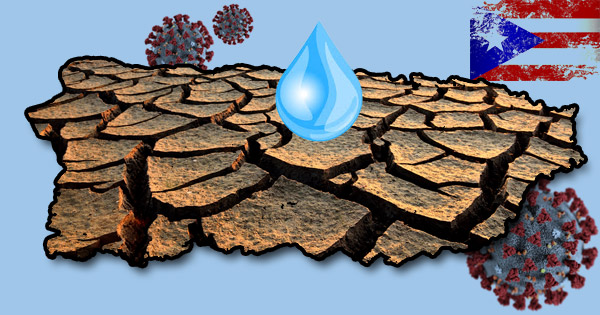Puerto Rico reversed its reopening last week after seeing a surge of new COVID-19 cases. While the rollbacks are similar to those in many parts of the U.S., one big factor compounds the risks faced by the island: 140,000 residents are subject to government-mandated water rationing and lose access to their faucets every other day.
Puerto Rican Governor Wanda Vázquez declared a state of emergency late last month after weeks of drought. Rationing began in June with 24-hour shutoffs every other day for affected residents. Lack of water access could make living through the pandemic deadlier, given that many will not be able to bathe, wash clothing, and disinfect surfaces as often as needed to avoid infection.
Both May and June were uncharacteristically dry months on the island, and the territory’s reservoirs had been significantly depleted by the time July came around. According to the U.S. Department of Agriculture’s Caribbean Climate Hub, more than 70 percent of the island was still abnormally dry as of last week, and a little more than half of the island was still experiencing moderate drought.
The situation does not appear as though it will improve any time soon: As of last week, several reservoirs on the island saw decreases in water levels, and fewer than half saw their water levels hold steady. Only one reservoir saw an increase in its water level.
South Puerto Rico, which is experiencing some of the worst drought, has also experienced ongoing earthquakes and aftershocks since late last year. Governor Vázquez declared another state of emergency on the island during the worst of the earthquakes in January.
Luis Alexis Rodriguez-Cruz, a University of Vermont PhD candidate researching climate change’s effects on Puerto Rico, currently lives near a cattle farm in Juana Diaz, an area in the South. Livestock that roam the mountains and fields have less and less to eat as dry conditions persist throughout the region.
“You can see the animals’ ribs,” he said. “Everything looks brown and dusty in the mountains.”
Rodriguez-Cruz pointed out that it’s natural for Puerto Rico to have dry months, but he added that climate change is worsening droughts throughout the Caribbean. Puerto Rican officials also declared a drought disaster in July 2015 after more than 80 percent of the island experienced a water deficit. Keep reading>>
